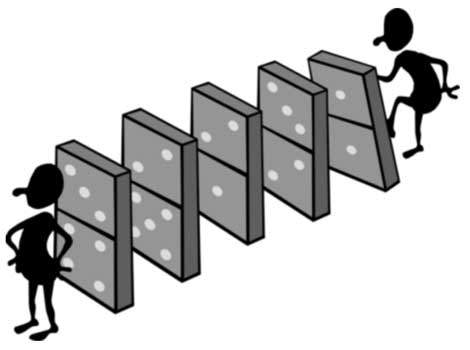World scientists strive to map activity in the human brain. Presumably, a map of neural activity will shed light on how the brain works and how choices get made.
Concurrently, there has been an upsurge in related fields seeking to understand human nature and behavior. One focus on change: neuro accounting, neuroeconomics, neurotics, neurofinance, neuro leadership, neurolinguistics, neuro management, neuromarketing, and now . . .neurofacilitation.
Neuroeconomics♦ developed over 50 research groups around the world, “exploring the brain processes that underlie decision-making.” Economics focuses on how people make choices, especially when they cannot get everything they want. Traditional theory asserts that rational decision-making maximizes utility, satisfaction, or well-being. Yet daily, people and groups generate sub-optimal decisions, so the question remains—why?
Science continues to advance our understanding of decision-making. Look no further for proof than proximity. Scientists now know where in the brain choosing occurs. They understand where preferences reside, and how choices happen physically. While they learn to model ‘how we choose our underwear” (or how monkeys choose their juice), we professional facilitators must be held accountable for mapping how complex group decisions are made. Business meetings could be referred to as a neural net of decision-making.
Traceability
Maintaining a diligent trail of challenge and documentation provides a benchmark to support neurofacilitation. Group decisions require traceability. Take any decision back to your supervisor, executive sponsor, or steering team and they will immediately respond with “Why?” Why did your group make the decision they made?
Data sets are making it much easier to make more informed decisions. Teo cites three relevant examples related to individual decision-making:
1) Electronic road pricing that helps predict the changing demographics, vehicle types, and density of traffic.
2) In New York City data is available on every taxicab: whether they are occupied or empty, when patrons are waiting (or not), the size of the tips, etc.
3) Equity stock selections where information abounds on whom, when, how much, etc.
Yet there is no comparable example offered to shed light on the most important decisions being made that affect all of humanity, not solely one individual. For example, should we go to war, fire a missile, build a new nuclear plant, construct a new highway (or conduct road repair), approve a major project, hire a key executive, etc..
Professional facilitators ought to sensitize themselves to the importance of neurofacilitation; i.e., challenging the underlying rationale and carefully documenting the support behind all of the options, not only the final choice. You may never want to see the term ‘neurofacilitation’ again, but you know that it oversimplifies the true nature and complexity of group decision-making, and how groups or teams define “utility.”
~~~~~~~
♦ Cited by Anna Teo (The Business Times, 01/03/13),
______
Don’t ruin your career by hosting bad meetings. Sign up for a workshop or send this to someone who should. MGRUSH workshops focus on meeting design and practice. Each person practices tools, methods, and activities every day during the week. Therefore, while some call this immersion, we call it the road to building high-value facilitation skills.
Our workshops also provide a superb way to earn up to 40 SEUs from the Scrum Alliance, 40 CDUs from IIBA, 40 Continuous Learning Points (CLPs) based on Federal Acquisition Certification Continuous Professional Learning Requirements using Training and Education activities, 40 Professional Development Units (PDUs) from SAVE International, as well as 4.0 CEUs for other professions. (See workshop and Reference Manual descriptions for details.)
Want a free 10-minute break timer? Sign up for our once-monthly newsletter HERE and receive a timer along with four other of our favorite facilitation tools, free.

Terrence Metz, president of MG RUSH Facilitation Training, was just 22-years-old and working as a Sales Engineer at Honeywell when he recognized a widespread problem—most meetings were ineffective and poorly led, wasting both time and company resources. However, he also observed meetings that worked. What set them apart? A well-prepared leader who structured the session to ensure participants contributed meaningfully and achieved clear outcomes.
Throughout his career, Metz, who earned an MBA from Kellogg (Northwestern University) experienced and also trained in various facilitation techniques. In 2004, he purchased MG RUSH where he shifted his focus toward improving established meeting designs and building a curriculum that would teach others how to lead, facilitate, and structure meetings that drive results. His expertise in training world-class facilitators led to the 2020 publication of Meetings That Get Results: A Guide to Building Better Meetings, a comprehensive resource on effectively building consensus.
Grounded in the principle that “nobody is smarter than everybody,” the book details the why, what, and how of building consensus when making decisions, planning, and solving problems. Along with a Participant’s Guide and supplemental workshops, it supports learning from foundational awareness to professional certification.
Metz’s first book, Change or Die: A Business Process Improvement Manual, tackled the challenges of process optimization. His upcoming book, Catalyst: Facilitating Innovation, focuses on meetings and workshops that don’t simply end when time runs out but conclude with actionable next steps and clear assignments—ensuring progress beyond discussions and ideas.




